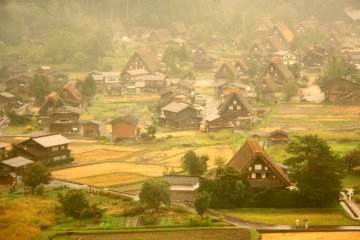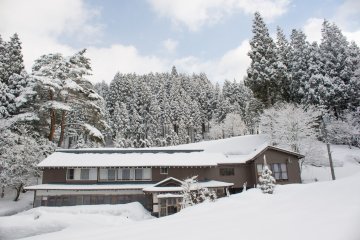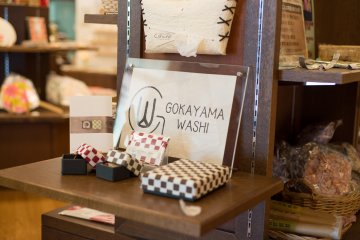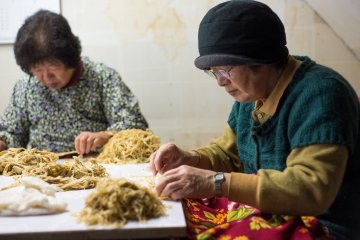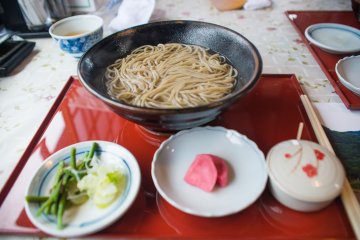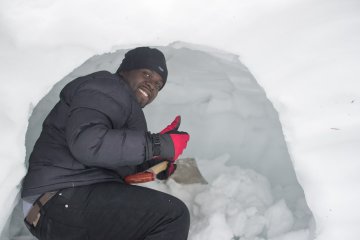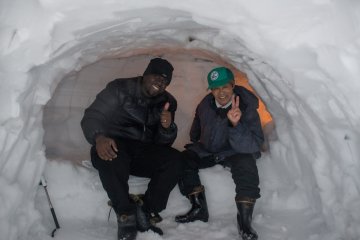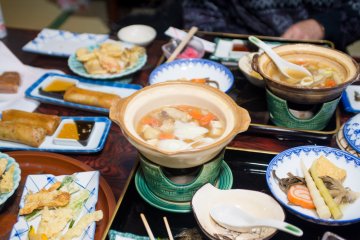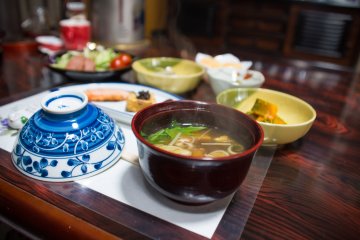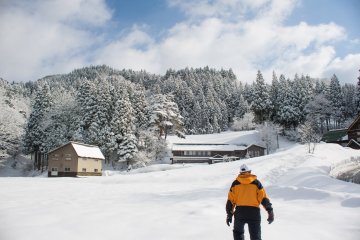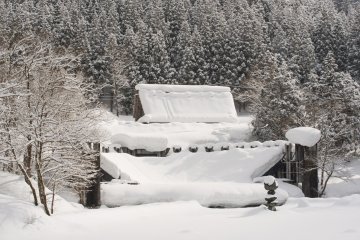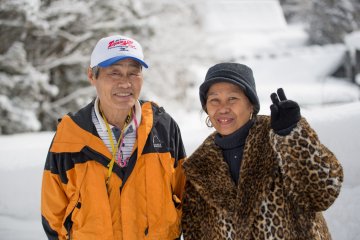When I stepped into the quaint mountain village of Toga in Toyama, I had no idea what an exhilarating and educational experience would be packed into my two day visit. My trip to Toga was in the middle of winter, so everything was covered in snow! Not a light sprinkle, but several feet of it. I thought perhaps the frigid cold would be a damper on my trip, but the warm hospitality and beautiful views made this an amazing experience.
I first made a stop in nearby Gokayama. Here I went to the Washi Taiken-kan Papermaking Center. Washi paper is only made in Gokayama and has a long history dating back to the Imperial Treasure House. It was fascinating to see how such care was taken to preserve the 1,200 year old art form. The paper itself is made from the fiber of a plant called Kouzo, which goes through extensive processing before it reaches its fibrous form. Vividly-dyed momiji leaves and other decorations are grafted into washi paper as well. I even got the chance to graft a personalized message into my paper.
Next, I took a half hour trip over to Toga where I would experience real mountain life. For lunch I enjoyed some delicious hot soba, something the locals enjoy on a daily basis. I also glimpsed the dessert menu and found a tasty looking pumpkin cake. I was bent on trying it and after the first bite, I was hooked.
Afterwards, I visited the nearby guest house of the Nakanishi family, the Nakanoya Villa. Their home was a traditional Japanese house with a panoramic view of the beautiful mountains and the added convenience of Wi-Fi. After settling in, Mr. Nakanishi and I shared some Toga Doburoku, unrefined Japanese rice sake. I have never tasted any type of sake of this sort and it was really good. We had a few drinks before going into the small sake factory, where I washed, cooked, smashed, soaked and mixed rice. I felt accomplished knowing that I had made my own original rice sake.
After a few drinks, we went outside and dug out a “kamakura”, which is basically a house made out of snow to protect you from the worst of the bad weather. After piling up a few meters of snow our house was complete.
We got back inside around dinner time. The food was colorful, neatly arranged, and mostly familiar. While scanning through to identify the components of my meal, I was informed that I would be having mountain pig and bear soup (the animal). To be honest, I was very hesitant, but I am glad I tried it because it was quite good. In fact, the food I had on my two day trip was the best I’d had since I have been living in Japan – so delicious and fresh. Bears and mountain pigs are what people in Toga normally eat.
On the second day of my trip, we went snow trekking with special footwear strapped to my boots. This was a total body workout with the amount of snow, but it was quite enjoyable. The scenery, snowfall and silence of the mountains was really peaceful and something I will not soon forget. My time in Toga was truly wonderful and the unique experience was well worth it. Anyone who is looking to get away from their humdrum or hectic schedule will feel refreshed after leaving this enchanting place.



